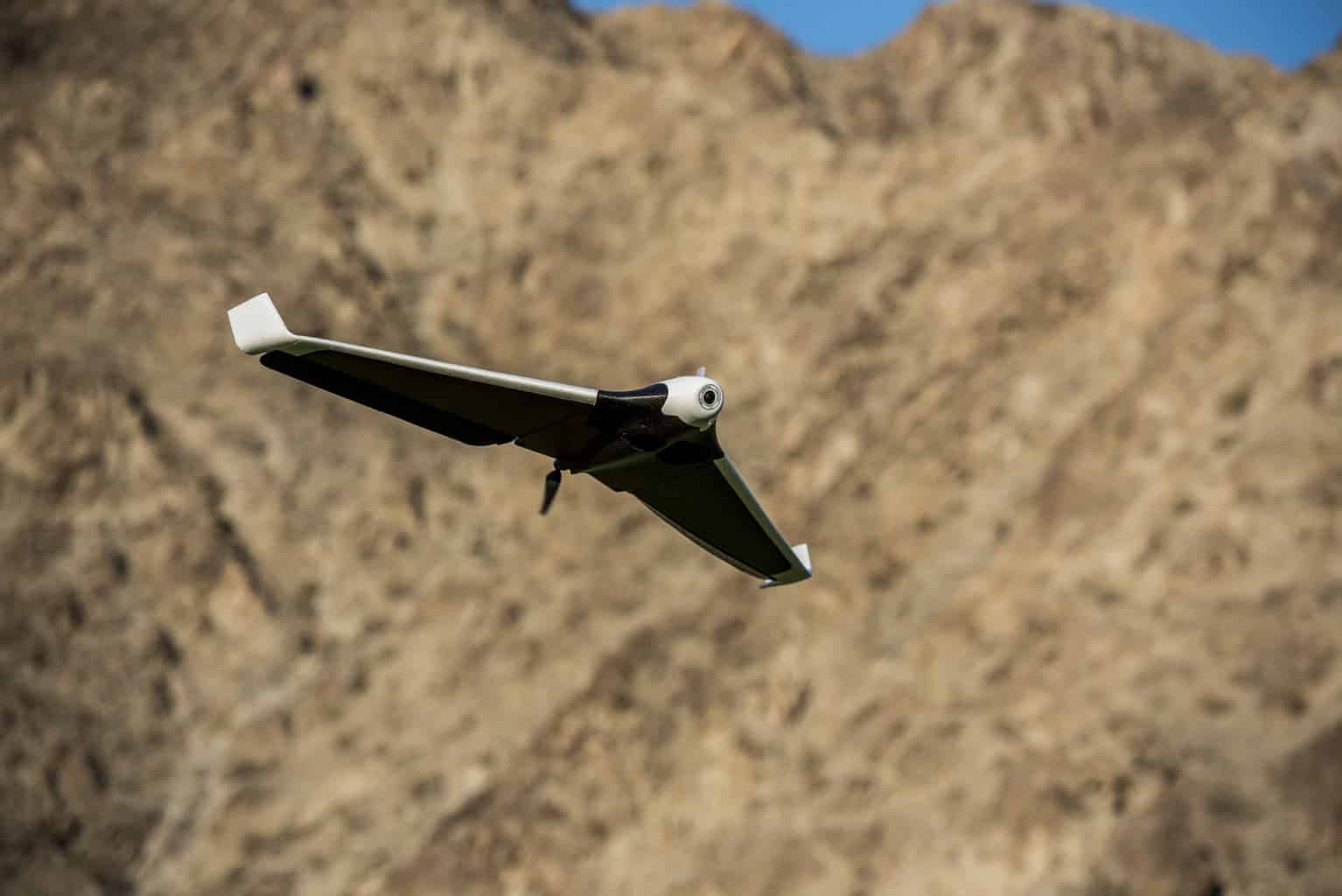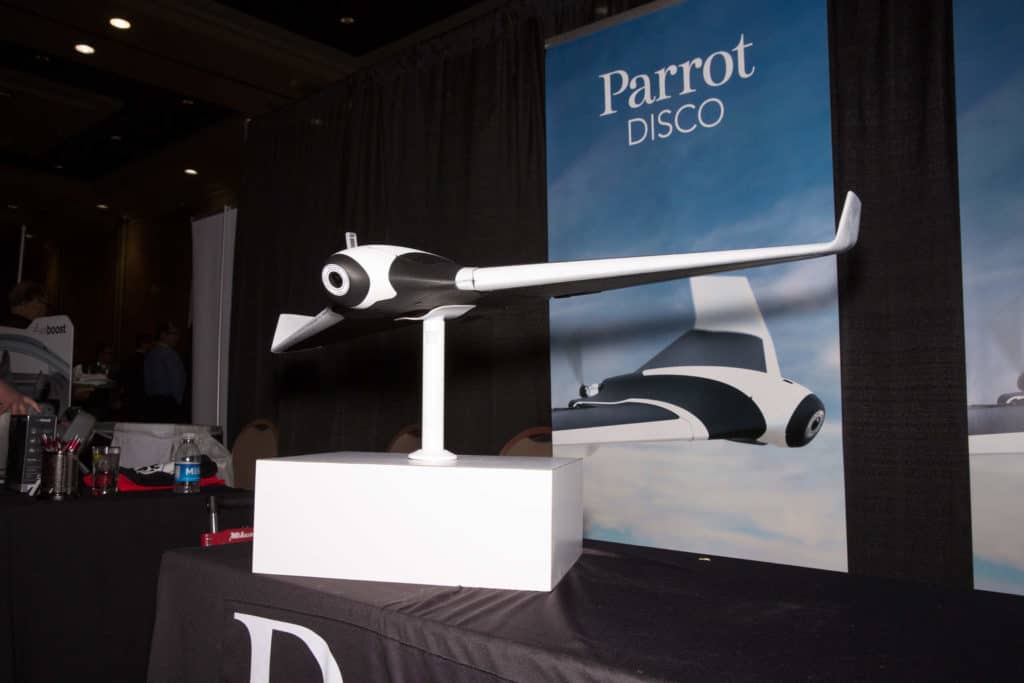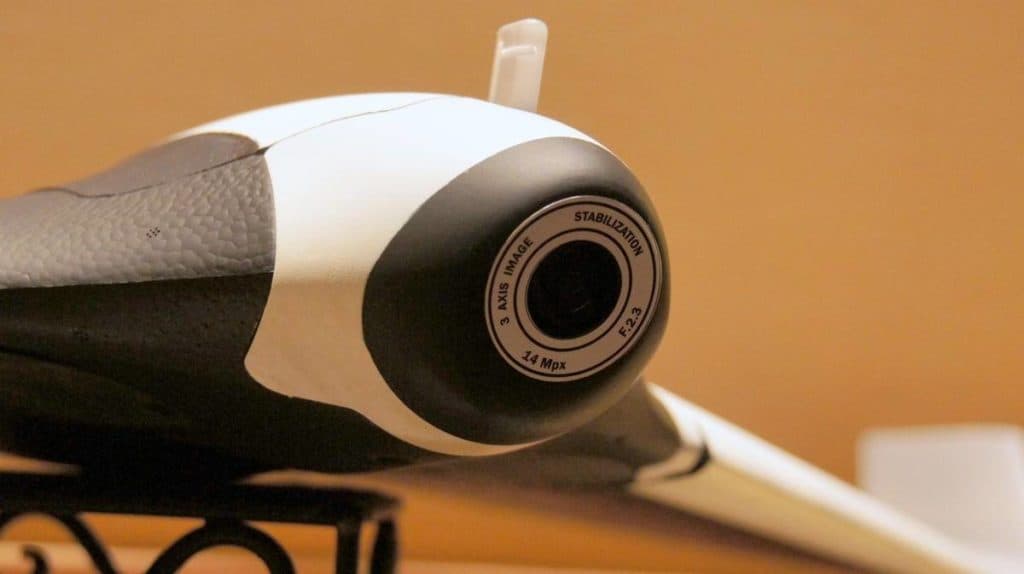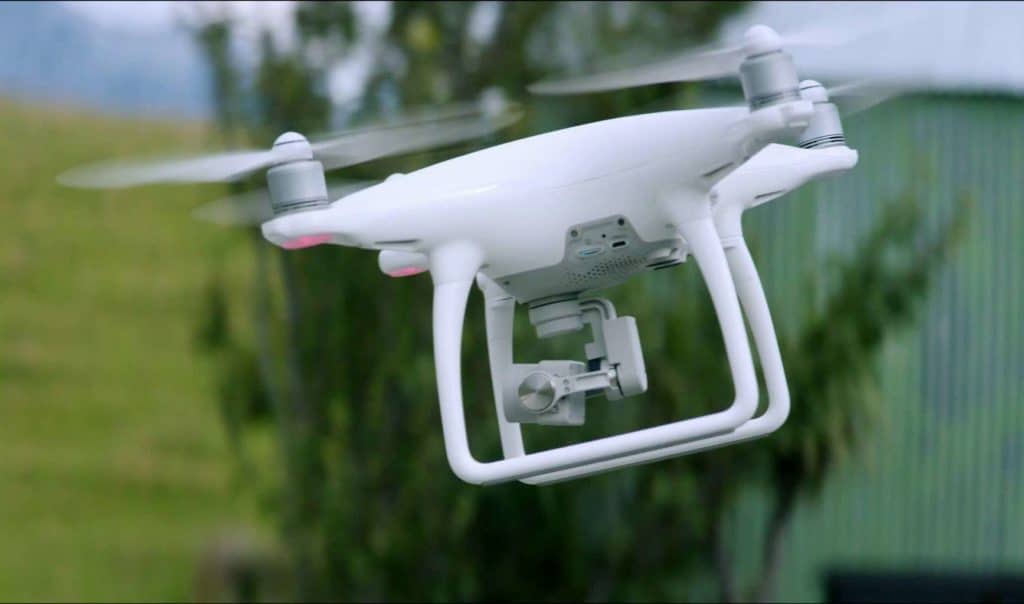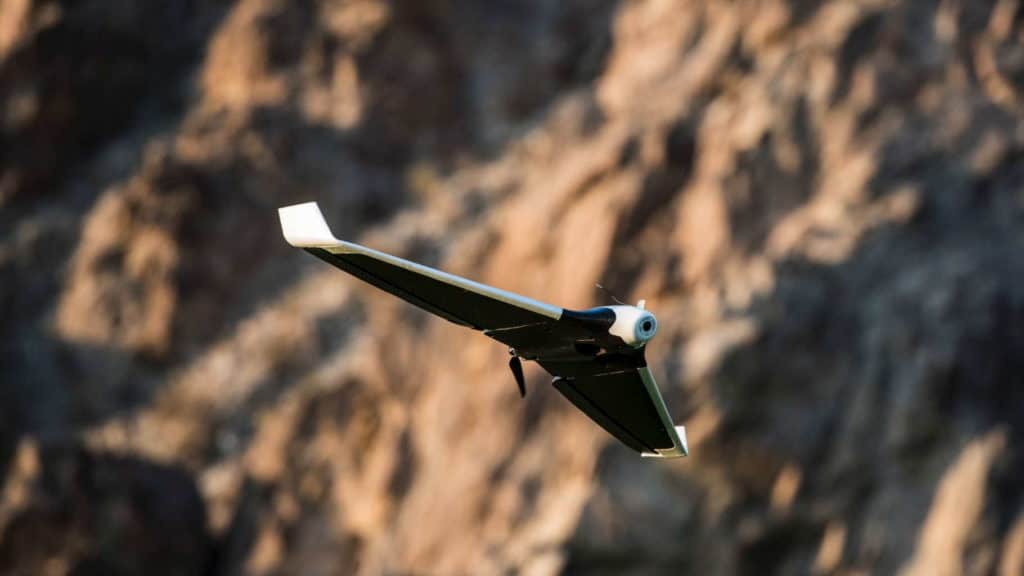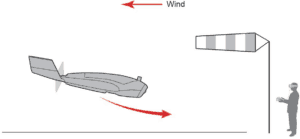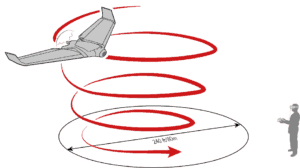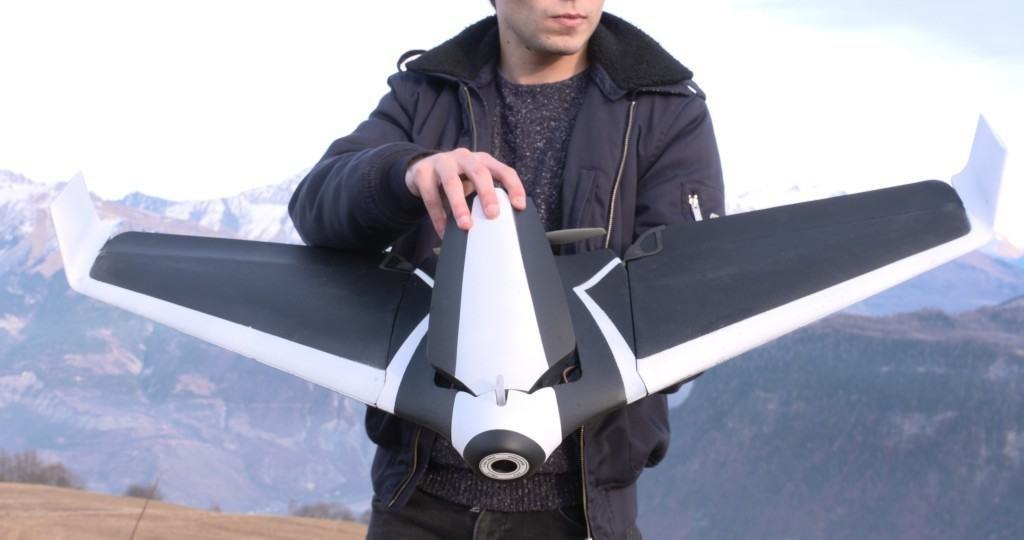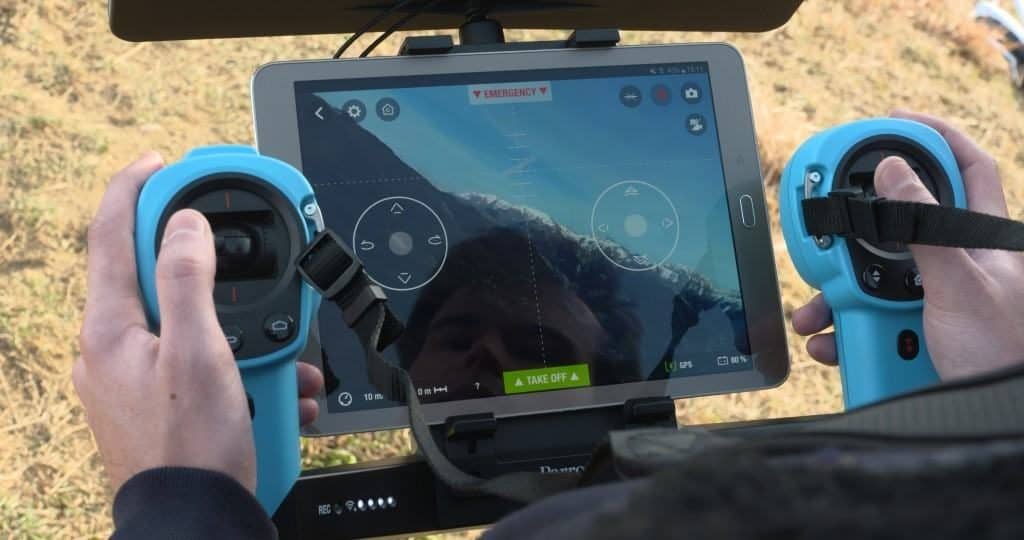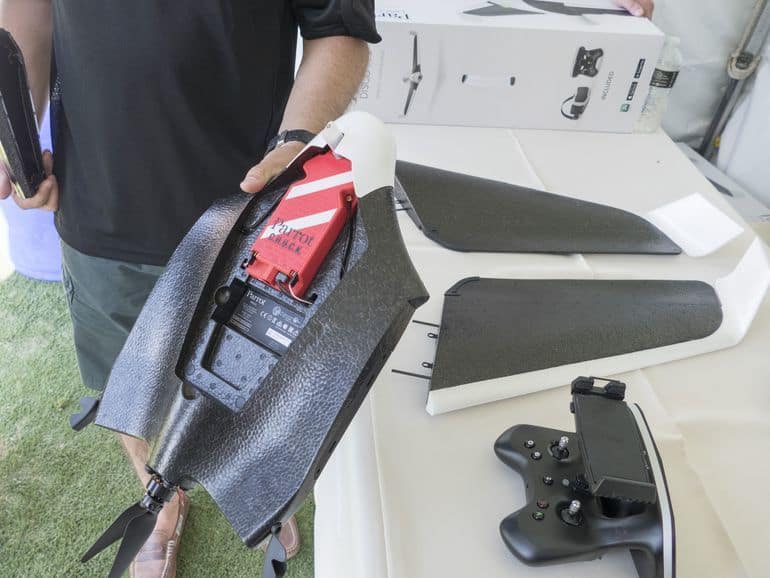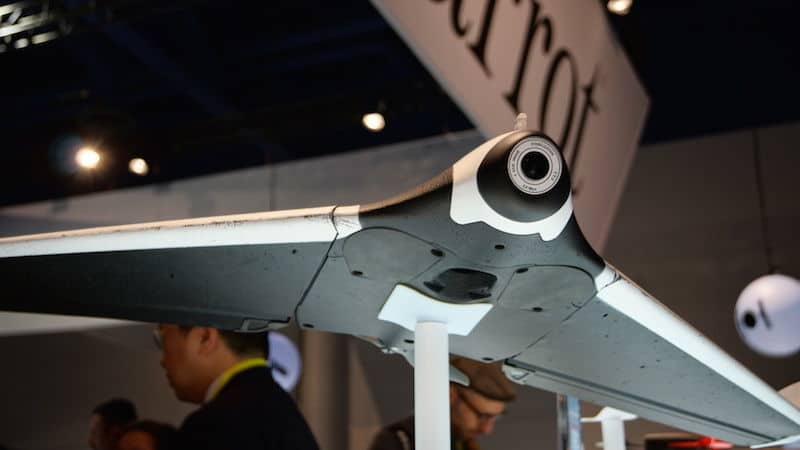The new Parrot Disco fixed-wing aircraft is very impressive and will have mass appeal, but the mainstream press/media reviews are once again missing an important point, the Parrot Disco is not for new pilots and could be dangerous in the wrong hands.
Introducing the Parrot Disco…
With quadcopters and hexcopters stealing the limelight for too long, Parrot; a large and successful French drone manufacturer, have just introduced something different. The Parrot Disco is a RTF (Ready To Fly) fixed wing aircraft which uses flaperons instead of the convention elevator and aileron arrangement.
[perfectpullquote align=”full” cite=”” link=”” color=”” class=”” size=””]”We conceived this wing with the help of SenseFly engineers, the leaders in commercial fixed wing drones. As an example, the autopilot code was tested in their HQ in Lausanne, Switzerland, and benefits from years of flight experience.”[/perfectpullquote]
Weighing less than 1kg and with its 3s 2700mAh battery it will fly for 45 minutes at speeds of up to 80kph/50mph. Via the built-in camera it can capture 1080p video and photos, stored to the onboard 32Gb storage whilst also being streamed live to the handset of the pilot.
The Parrot Disco is not for high-quality aerial footage, this is more of a ‘pilots’ aircraft than the DJI or Yuneec platforms.
The unique selling features of the aircraft are its autonomy, the Parrot Disco packs an impressive set of sensors which are likely to account for the excessively high cost of this new product ($1,299), they include the following:
- Ultrasound.
- Altimeter.
- Optical flow camera.
- Airspeed sensor (Pitot tube).
- 3-axis gyroscope.
- 3-axis accelerometer.
- 3-axis magnetometer.
These sensors assist you during the launch process by self-leveling and controlling thrust, the Disco will even auto-land via a spiral-descent method. But despite packing all of this impressive technology, it may not be enough for the new pilot, particularly because the Parrot Disco is missing one key element, Obstacle Avoidance.
Parrot Disco Feature Analysis…
We must first highlight that we have not flown the Parrot Disco, we would of course love to have a go so as to provide a more thorough evaluation but in the meantime will comment on the specification that is known at this time.
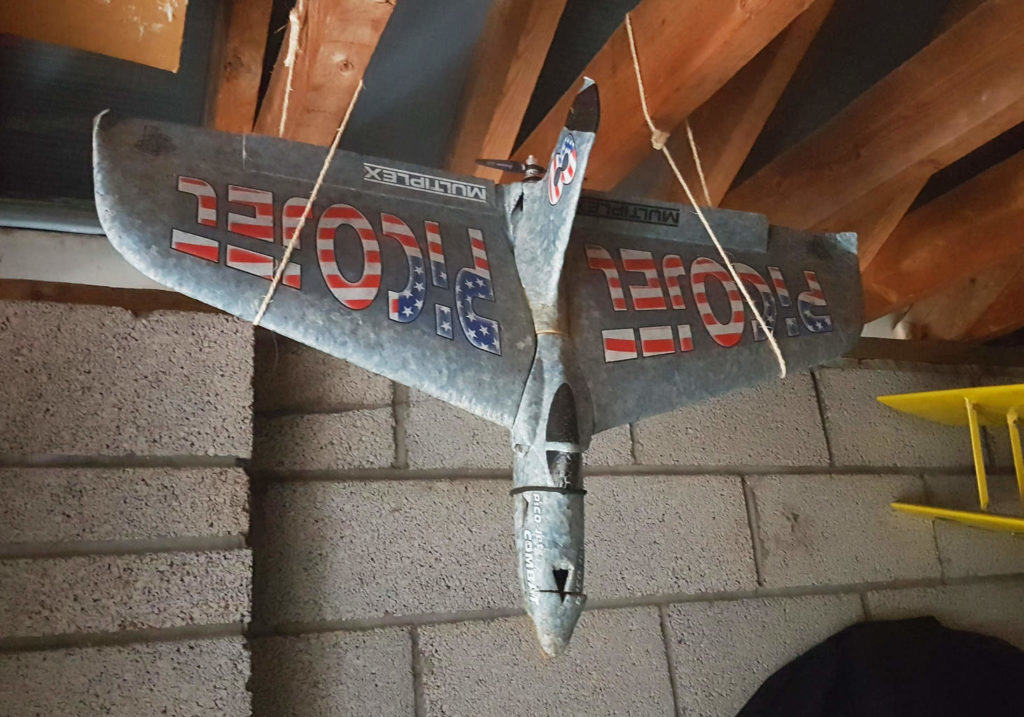
Many years ago, the traditional RC hobby largely involved fixed wing aircraft like the Parrot Disco, helicopters were also very popular but most fanatics were flying planes/wings and at that time there was limited autonomy meaning that LOS (line-of-sight) flight was a very manual and impressive skill. Two of the first (and my personal favourites) were the Multiplex Picojet and the Multiplex Twinjet, you can see me flying it below, they were quick and cost all-in less than $300 to get into the air.
In 2010, quadcopters; known commonly now as ‘Drones’, started to lower in price and manufacturers have in the past few years switched their focus from the niche RC market to a broader regular consumer in order to increase sales, a common trend as these products become easier to fly due to the introduction of advanced autonomy such as obstacle avoidance, return-to-home and other safety mechanisms. Someone that has never flown RC in their life can buy a Phantom 4 and fly it safely straight out of the box, without even touching the transmitter sticks. It will even auto-land on the spot when its battery reaches depletion.
With the arrival of the Parrot Disco comes a problem, drones have the capability to hover on the spot without the pilot even touching the controls, but this new product needs hand-holding, responsibility and requires a lot of consideration and input for getting it back onto the ground safely.
Where to fly the Parrot Disco…
Many amateur pilots have been persecuted by the press, media and even their own peers for flying quadcopters irresponsibly within major cities, parks back yards and small fields, contrary to CAA/FAA rules, but when comparing a newbie-pilot flying a hovering quadcopter to one flying an 80kph/50mph fixed wing aircraft which cannot simply ‘stop in the sky’, the latter is far more dangerous.
A multicopter (quad or hex) can be safely flown in non-spacious areas if the pilot is responsible and competent, but the Parrot Disco requires a large and obstacle free area. It must never be flown in a city-park nor flown from a garden. The fear is that some consumers will naively attempt to do so and then struggle to land the aircraft due to a lack of glide-path or spiral-landing room as explained below.
Launching and Landing The Disco…
The Parrot Disco has no VTOL (Vertical Takeoff & Landing) like a conventional drone and therefore it must be ‘thrown’ into the air, this clearly requires space for it to gain altitude. Seasoned RC pilots often launch their aircraft in this style, but if done incorrectly by an amateur the pilot can injure themselves due to the large spinning prop on the rear of the aircraft, the aircraft can also plummet straight into the ground if not done correctly. It is also essential that the aircraft is thrown into the wind.
https://www.youtube.com/watch?v=PQK9OPCAhyk
Launching should be the easy part, the pilot now needs to get the Disco back to the ground. A competent RC pilot will be able to land a fixed wing aircraft easily but in doing so would be carefully considering the wind direction and speed, air-speed of the aircraft, glide ratio, obstacles (such as power-lines) and most importantly the environment and terrain onto which they will land, but these parameters will probably not cross the mind of an amateur.
The Parrot Disco does attempt to assist a little by offering two automated landing mechanisms, Linear or Spiral:
Both methods are activated using the app which accompanies the aircraft, the spiral method uses an 80m diameter circling descent pattern and therefore the pilot must be confident that such space is available, adding margin for error (therefore at least 100m).
The linear method initiates a straight-line downward approach towards the pilot from wherever the aircraft is located, but this method could potentially go horrifically wrong if the aircraft is not flown in an appropriate location where there are obstacles or simply insufficient space for the descent.
Here is the Parrot instructional video for landing, note how most of the ‘touchdown’ shots are in slow-motion:
Safety Mechanisms and Obstacle Avoidance…
Despite its impressive array of sensors, the safety features of the Parrot Disco can only extend as far as an aircraft dependent on forward-motion allows, unlike a quadcopter which can hover on the spot. Return-To-Home forces the aircraft to fly itself back to the location of the pilot, once arrived it will circle the pilot automatically at 50m altitude via a 60m diameter holding pattern, after which the pilot can initiate one of the auto-landing methods.
The automated landing methods include an ‘abort’ feature which will prompt the Parrot Disco to climb back up to 50m and initiate a circular holding-pattern, but this is dependent on there being room for the emergency ascent.
Upon starting the motor for launch, if the Parrot Disco detects that it has not launched after 10 seconds, it will automatically cut power to the motor.
Finally, the Parrot features intelligence to detect control-inputs which might be deemed ‘reckless’ and will prevent the aircraft from initiating such maneuvers.
Is there Obstacle Avoidance?…
Missing from this impressive aircraft is a core and important feature without which the aircraft is essentialy blind, Obstacle Avoidance.
This functionality provides an aircraft with a view of obstacles surrounding it, either via sonar, radar (or the varient LIDAR) or optical flow visual sensing. Drones such as the Phantom 4 and Typhoon H were only recently equipped with this features but on such agile aircraft it is not a mandatory feature, however on a fixed-wing aircraft targeted at amateurs, neglecting to add this feature was a mistake.
The automated landing methods do allow for manual pilot input but it is highly unlikely that beginners will have the skill required to manipulate the landing direction of an aircraft when it is flying towards them, due to the common orientation confusions with RC).
The Disco therefore becomes an incoming missile which could easily hit the pilot (if occupied whilst wearing his FPV headset) and/or people in the near vicinity, another reason to fly this aircraft in a wide open area.
During regular flight or descent/spiral for landing, the Disco cannot see buildings, power-lines/cables, towers, unexpected changes in terrain and people, therefore if auto-land is initiated but the obstacle lies between the pilot and the aircraft, Disco will plough straight into it, this could be catastrophic at 80kph/50mph.
The exclusion of Obstacle Avoidance on this aircraft is a mistake and it can only be hoped that Parrot will further utilize the front-facing camera via a firmware update to incorporate intelligence to identify and avoid obstacles.
FPV Distraction…
The Parrot Disco also comes with an FPV headset into which you insert a smart-phone. The pilot can fly via the controls whilst looking through the headset as if sat within the aircraft itself. This however can lead to disorientation and a loss of perspective as to where the aircraft is.
Building a dependency on a ‘Return To Home’ button is dangerous, a responsible pilot should always maintain LOS (Line Of Sight) of his aircraft but if navigating whilst wearing an FPV headset, this is not possible.
Damaging The Parrot Disco…
A final concern is longevity, the Parrot Disco is constructed from a compressed ‘foam’ material popular with RTF RC models, but this material does suffer from the wear and tear of multiple landings on various types of terrain.
The high cost of $1,299 may frustrate owners when after just a few flights, the aircraft is looking less premium than they would have hoped, although it is expected that spare wing pieces will be on offer for sale from Parrot.
Next the camera fitted to the front of the Parrot Disco in quite a vulnerable position. Fixed-wing aircraft do not land vertically, they descent with the nose generally taking a little abuse on each touch-down, it is likely that the lens will not last long and it is hoped that this is replaceable.
Fortunately the Parrot Disco features a folding prop, therefore upon landing the blades fold rear-ward to avoid damage to them.
https://www.youtube.com/watch?v=pAS0NrPLkxQ&feature=youtu.be
Parrot Disco in Summary…
This is a very impressive aircraft and to summaries it more efficiently, we will provide an evaluation based on three levels of expertise.
For competent/experienced RC pilots, the amount of autonomy will most likely spoil the ‘flight experience’ for you, a little like comparing the drive of a car to that of a train. RC veterans will know that an aircraft with similar characteristics (if not bigger and better) can be constructed for 1/3th of the price from kit form, using aircraft such as the Multiplex Funjet, these aircraft end up being much faster, scalable power/configuration, bigger in size and generally more responsive. We would recommend that you skip the Parrot Disco and await a more exciting proposition to arrive.
For mid-level RC pilots, this is an ideal cross-over aircraft for you if you are used to flying multicopter drones already. The Parrot Disco provides you with the autonomy required to protect you from crashing whilst you familiarize yourself with fixed-wing flight characteristics which do differ substantially to that of a multicopter. The downside is the price, this aircraft is overpriced and until that figure drops, it would be advised to give the Parrot Disco a little more time in the market for competition to grow and the RRP to drop.
For amateurs/entry-level RC pilots, unfortuantely we would have to recommend that you avoid the Parrot Disco. This aircraft is not only capable of speeds of up to 80kph/50mph but it also requires careful planning and evaluation of your surroundings, as well as orientation-aware manual input when landing specifically. It is key that the pilot is fully aware of factors which influence the flight of a fixed-wing aircraft, without such experience it is harder to evaluate flying sites and to manage the aircraft safely.
The Parrot Disco is available to purchase now via BangGood by clicking here.
Overall, this is an exciting new launch from Parrot and we hope that it will be the start of a shift away from the flood of multicopter releases.
For more information about the Parrot Disco, visit their official site, also be sure to join the DroningON Discussion Group to enter the conversation.

